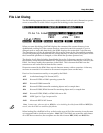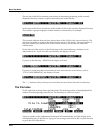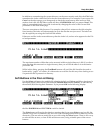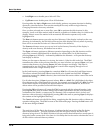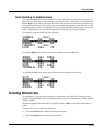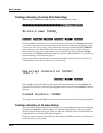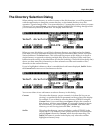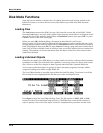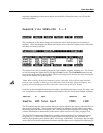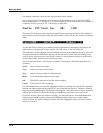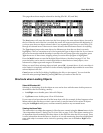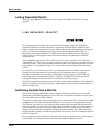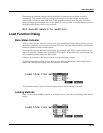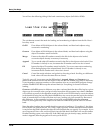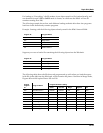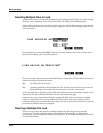
Basic Disk Mode
Disk Mode Functions
13-15
moments, depending on how many objects are in the file. During this time, you will see the
following display:
||||||||||||||||||||||||||||||||||||||||
||||||||||||||||||||||||||||||||||||||||
||||||||||||||||||||||||||||||||||||||||
Reading|file|SAXES.K26||[...]|||||||||||
||||||||||||||||||||||||||||||||||||||||
||||||||||||||||||||||||||||||||||||||||
||||||||||||||||||||||||||||||||||||||||
Select||Next|||Type|||Multi|||OK||Cancel
The soft buttons in the above display do not become active until the process of scanning is
finished. When this happens, the K2661 will display a list of the file’s objects, in the exact order
that they are stored in the file:
Func:LOAD|||||Sel:0/5|||||||||||Index:|1
||||||||||||||||||||||||||||||||||||||||
||||||||||||||||||||||||||||||||||||||||
Sample||200|Tenor|Sax1|||||||G|2S|||250K
Sample||201|Tenor|Sax2|||||||C|3S|||179K
Sample||203|Tenor|Sax3|||||||F#3S|||198K
Keymap||200|Tenor|Sax|||||||||||||||176|
Select||Next||Type|||Multi|||OK|||Cancel
The objects in the list are usually grouped by type (sample, program, keymap, etc.). The list can
be scrolled using the Alpha wheel or the Up or Down cursors. The Chan/Bank buttons on the
front panel can be used for fast scrolling. The list will jump by five entries at a time, moving the
entry on the bottom line to the top line.
Note: When scrolling through large numbers of objects (more than 100), the K2661 may sometimes
pause for a few seconds if it needs to get more information from the disk file. When this happens, some
gyrating dots will briefly appear in place of the Index value on the top line of the display.
Each line in the scrollable list represents one object, and displays the object’s type, ID, name, and
size. Samples have additional information: the sample’s root key and a stereo sample indicator:
Sample||203|Tenor|Sax3|||||||||F#3S|||||198K
The ID numbers are the same numbers that were used to reference the objects when the file was
last saved by the K2661. These numbers will usually be different after the objects are loaded,
depending upon the bank (for example, 200...299) and mode that is specified for loading. There
is more information on these modes in the section called Load Function Dialog on page 13-19.
The Size field is interpreted differently for samples and nonsamples. For nonsamples (songs,
programs, etc.), it shows the number of bytes used by the object in the file, and hence the
amount of program memory that the object will occupy in the K2661. For samples, the size field
shows the size of the all sample data associated with the object, and is displayed in kilobytes (K).
Object Type ID Name Sample Info Size



